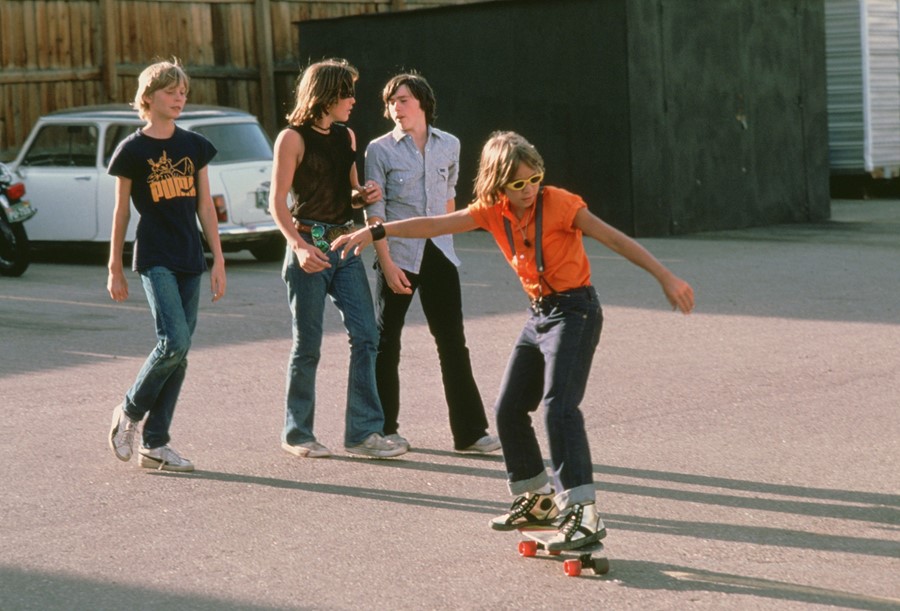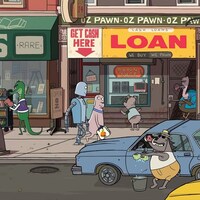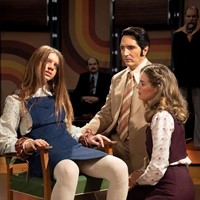With a long-overdue re-release, dive into why this low budget teen drama inspired ‘Smells Like Teen Spirit’, Harmony Korine, and Richard Linklater with its anarchic aesthetic and grunge soundtrack
In 1979, a low budget teen drama based on a spate of juvenile crimes in California wrapped production. It was only the second feature to be financed by Orion Pictures – who later cemented their legacy with The Terminator, Platoon, and The Silence of the Lambs; a tale of teen angst, small-town boredom and living for today. Over The Edge, by all rights, would capture the minds of disillusioned kids across the whole country – until it was abruptly pulled from theatres over fears it would spark a wave of violence.
In the years since its cauterised release, Over The Edge would reach cult status courtesy of word-of-mouth reputation and late night TV screenings. The film would find fandom in everyone from Kurt Cobain to Harmony Korine, inspiring teen movies of the 90s such as Kids, and even Richard Linklater’s Dazed and Confused.
On May 31, 2021, Arrow Video gives Over The Edge a long-overdue re-release, bringing the anarchic fervour of a delinquent teen society to the high definition present for the film’s first-ever Blu-ray release. Here’s a breakdown of why it’s an occasion worth skipping school for – whether “the man” gets it or not.
“THEY WERE OLD ENOUGH TO KNOW BETTER... BUT TOO YOUNG TO CARE”
In the fictional settlement of New Granada, a planned community on the edge of the Colorado dustbowl, a group of scruffy, directionless teens in dungarees, bandanas, and crop tops find themselves in a world with no care for their needs. School sucks. There are punch-ups in the playground. And house parties are raided tirelessly by cops hellbent on cramping their style. There’s nothing better to do, then, than to drink beer, shoot pool, play records, and “get stoned 24 hours a day”.
The local youth hall – a bomb-shelter-like construct that resembles a giant, upturned pig sty – is the only place they truly call their own. But even this safe haven has come under threat. ‘The Rec’ faces closure, even demolition; the town’s adults are more concerned with improving the resale value of their identikit apartment blocks and condos than providing recreational space for their delinquent kids.
There’s only one thing for it. Incensed by the police shooting of a popular local lad, the town’s youths commit to an anarchic plan. At a climactic parent-teacher meeting at school, they focus their vengeance on the ultimate institution of their repression: the school. And as cars are tipped, windows are smashed, and classrooms are looted, the explosions in the parking lot signal a brief taste of redemption for a community whose needs were ignored for too long.
BASED ON REAL EVENTS (NO, REALLY)
“In 1978, 110,000 kids under 18 were arrested for crimes of vandalism in the United States,” reads the opening scrawl of Over The Edge. “This story is based on true incidents in a planned suburban community… where city planners ignored the fact that a quarter of the population was 15 years old or younger.”
The settlement was Foster City, California – an idealistic town near San Francisco, built around a Venice-like canal system and described as the “island of blue lagoons” in 1963 marketing literature. It was supposed to be the American Dream realised. And while the city is acknowledged today as one of the safest in the country, it was once the site of the highest rate of teen vandalism in the USA.
As reported in the San Francisco Examiner in the now-infamous 1973 article “Mousepacks: kids on a crime spree”, children as young as eight or nine would smash windows, slash tires, and wreak havoc with pipe bombs, liquid cement, and BB guns. “There was no explanation,” the newspaper apathetically declared. “Nor are there any ready answers for the entire phenomenon of pre-teen crime.”
The article was the basis of the film’s conception (the working title was Mousepacks). And while the city pushed back against the sensationalist feature, contemporary rhetoric ensures that the legend remains vivid. “Foster City was the worst cities (sic) I had lived in as a kid,” said user FC76-81, on a City Data messageboard discussion in 2015. “The kids made it the worst… they would only address one another by last names… and there was a very strong pressure to do what the other kids want you to do such as drugs, bullying, (and) stealing.”
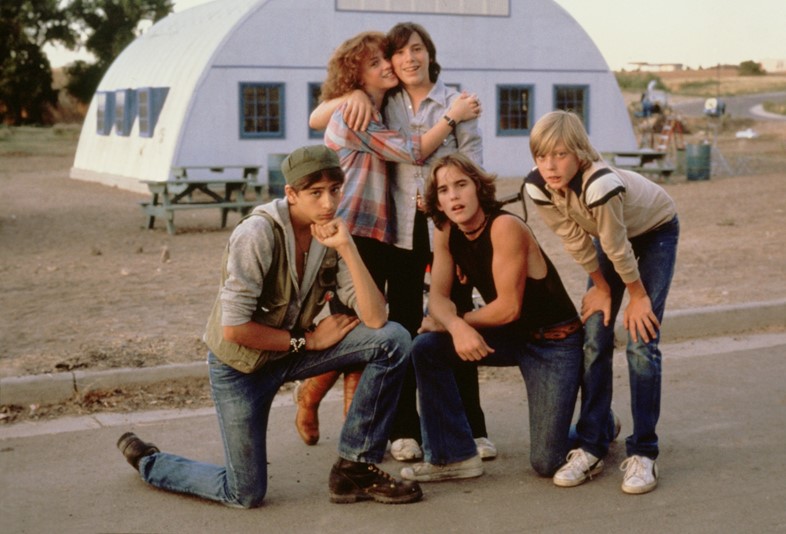
THE FEATURE FILM DEBUT OF REAL-LIFE TRUANT MATT DILLON
In an effort to maintain a sense of realism and integrity, director Jonathan Kaplan cast the film’s juvenile performers from New York schools – with a preference for those cutting classes and smoking dope. 14-year-old Matt Dillon was “discovered” in just this manner – plucked from the schoolyard to begin an impressive ascent to stardom.
Dillon would play Richie, the leader of New Granada’s teen-aged delinquents, complete with floppy haircut, cannabis leaf belt buckle, and chopper bike. With much of the film’s most memorable dialogue centred around him (“a kid who tells on another kid is a dead kid!”), Dillon proved a natural star – propelled by his tendency to stay in character even after the cameras stopped rolling.
As co-star Vincent Spano recalls in the new Arrow documentary, Wide Streets and Narrow Minds, the pair once ducked off from production to get a memorable first glimpse of an adult movie at a local theatre: Long Jeanne Silver, the tale of a “handicapped and horny” amputee with an appetite for sexual adventures. “We got bored, I think,” remembers Dillon. “And then went and played Pac Man.”
Dillon’s aloof attitude and magnetic screen presence would cement him as a teen sensation in the years that followed. Starring roles in Tex, The Outsiders and Francis Ford Coppola’s Rumble Fish all arrived within four years of the film’s completion. By no coincidence, each of these works were based on books by S. E. Hinton – a writer whose young adult novels, as the writers of Over The Edge recall, had been uniformly consumed by the same Foster City kids they had interviewed while writing their script.
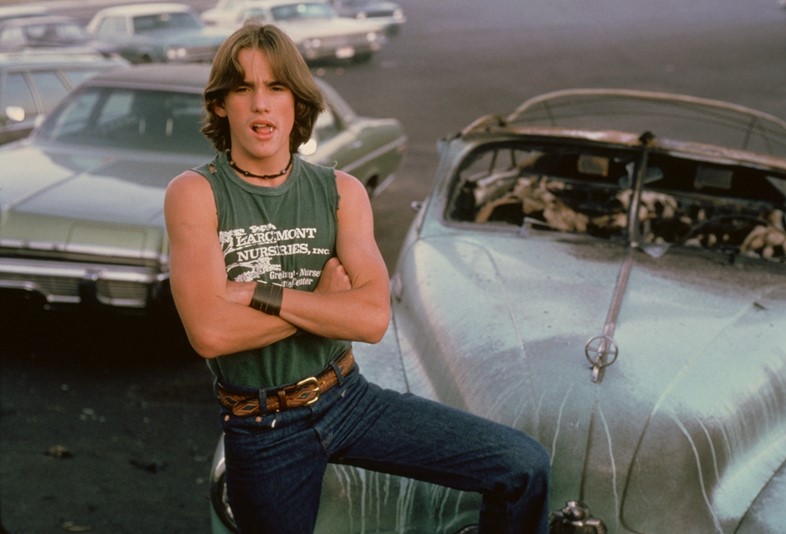
SMELLS LIKE TEEN SPIRIT
With a guitar-heavy soundtrack shaped by the film’s teen-aged stars, Over The Edge careens with the riotous sounds of Cheap Trick, The Cars, Jimi Hendrix, and The Ramones, while the likes of Jefferson Starship and Kiss also pop up on t-shirts and in dialogue. But Over The Edge’s musical legacy is ultimately best embodied by the fandom of one of grunge’s most enduring icons, years later.
Nirvana frontman Kurt Cobain was a notorious movie fan – regularly loading up on rented VHS tapes from Seattle’s Scarecrow Video before going on tour in the 90s, only to return to some hefty overdue fines. And while he would cite the likes of Paris, Texas and Rear Window as favourites during his lifetime, Over The Edge also held a special place in his conscience. “That (movie) pretty much defined my whole personality,” he said in the 1993 biography Come As You Are, by Michael Azerrad. “It was really cool. Total anarchy.”
More than just a time-killing fancy, the film wound its way into one of the band’s most popular music videos. “They wanted to do something very punk,” recalls director Samuel Bayer of the chaotic high school scenario for “Smells Like Teen Spirit” – with “obscure cult film” Over The Edge and The Ramones’ film Rock ’n’ Roll High School providing key references for the visuals.
TEENAGE RIOTS
Over The Edge’s botched release was, largely, the consequence of the film arriving in the wrong place at the wrong time. A series of films released just months prior had sparked violence, riots and even death, forcing the hands of the producers to pull the feature from theatres.
In February 1979, The New York Times reported that two youths were slain in fights at theatres screening the The Warriors, while a teenager in Boston was stabbed to death by an acquaintance who had just seen the same movie. In another incident, at a Palm Springs drive-in theatre, 19-year-old Marvin Kenneth Eller was shot in the head, and died four days later.
Two months later, the same newspaper would report that five people were shot and three stabbed at two theatres on the opening night of Mexican-American crime film Boulevard Nights. As a consequence, similarly themed films including The Wanderers, Walk Proud, and, in May 1979, Over The Edge were pulled from theatres across the country over fears they would inspire riots and copycat violence.

A POTENT LEGACY
The film’s legacy lives on through the films and filmmakers that it inspired. “When I was doing Dazed and Confused, People were (asking), ‘What’s a good teenage movie?’,” Richard Linklater said in an interview with Trunkworthy. “I always said… Over The Edge and River’s Edge. Tim (Hunter) wrote Over the Edge and he directed River’s Edge. So there’s something about Tim Hunter and teenage movies – he’s the master of a certain kind of alienation and crazy teenage energy.”
The feeling resonated with another influential creative, whose own provocative teen culture film would go on to define a generation. “I was really into certain teen movies like Over The Edge,” Harmony Korine recalled in a 2018 interview with Gagosian, when discussing writing 1995’s Kids with Larry Clark. “Movies that were based on reality and an adolescent world, but that were pushed into the hyperreal or hyperpoetic.”
Over The Edge is out on Blu-ray via Arrow Films on May 31
